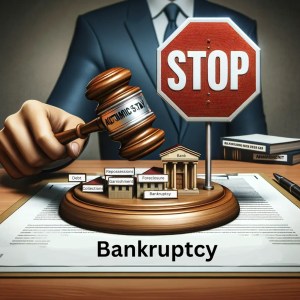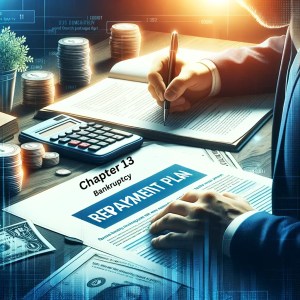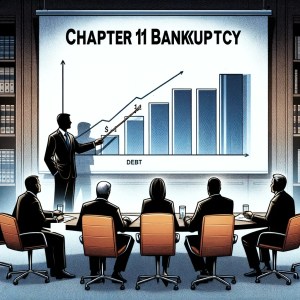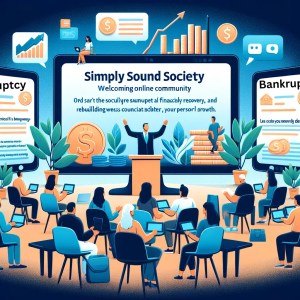Bankruptcy Outlook
Introduction
As 2023 draws to a close, individuals and businesses facing financial challenges are looking ahead to 2024. With economic uncertainties still prevalent, understanding the role and nuances of bankruptcy becomes increasingly pertinent. This article aims to provide a timely overview of bankruptcy, detailing its types, benefits, and risks, and equipping readers with knowledge to navigate these complex financial decisions effectively as they enter the new year.

Increased Bankruptcy Filings in 2023
Bankruptcy filings have seen a noticeable increase in 2023. Factors contributing to this rise include economic uncertainty, job losses, and lingering effects of the COVID-19 pandemic. These challenges have led to escalating personal debt, pushing many towards bankruptcy as a viable solution. Reasons driving individuals to file for bankruptcy include economic instability, high levels of personal debt, overwhelming medical expenses, and financial difficulties following a divorce or separation.
Types of Bankruptcy
Personal Bankruptcies
- Chapter 7 (Liquidation):
- Chapter 13 (Reorganization):

Business Bankruptcies
- Chapter 11 (Reorganization):
- Chapter 12 (For Family Farmers and Fishermen):
- Chapter 15 (For Foreign Creditors):
- Chapter 9 (For Municipalities):
Benefits of Filing for Bankruptcy
- Debt Discharge: Most bankruptcy types lead to the discharge of unsecured debts, providing a fresh start.
- Automatic Stay: Prevents further debt collection actions, offering immediate relief from financial pressures.
- Restructuring of Secured Debts: Makes debts like mortgages or car loans more manageable.
- Potential Credit Score Improvement: Although initially impacting credit scores negatively, bankruptcy can lead to improved scores over time through responsible financial behavior.

Risks and Considerations
Financial and Personal Impacts
- Asset Liquidation: Under Chapter 7, non-exempt assets may be liquidated.
- Credit Score Impact: Bankruptcy can drastically lower credit scores, affecting future credit opportunities. A Chapter 7 bankruptcy remains on credit reports for 10 years, while Chapter 13 stays for seven years.
- Public Record: Bankruptcy filings are public, potentially impacting personal and professional relationships.

Property Concerns
- Home: Risk of losing your home varies by bankruptcy type and the amount of home equity.
- Vehicle: Keeping a car depends on the ability to continue payments and the vehicle’s equity.
- Cash and Retirement Accounts: State-specific exemptions apply, with some protections for cash and retirement accounts.
Employment Considerations
- Employer Notification: While not always necessary, employers may be informed in cases of wage garnishment or court-ordered repayment plans.

Conclusion
Bankruptcy in 2023 presents a complex yet vital option for those overwhelmed by debt. It’s crucial to understand the various types, along with their associated benefits and risks, to make informed decisions. This path, while challenging, offers the possibility of a financial reset and a fresh start. However, it’s advisable to seek professional guidance to navigate this process effectively.
Simply Sound Society: Join the Discussion
We invite you to become a valued member of the Simply Sound Society. Join our thriving community dedicated to personal growth, support, and meaningful discussions on a wide range of topics. Together, we can embark on a journey of self-discovery and positive change, one conversation at a time. Your voice matters, and your presence can make a real impact in our community. Join us today and be part of something truly special.

Don’t forget about our Free Toolkit, Access the free tools HERE!
















Thanks for sharing. I read many of your blog posts, cool, your blog is very good.
Can you be more specific about the content of your article? After reading it, I still have some doubts. Hope you can help me.